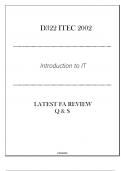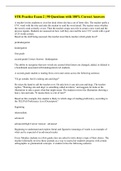College aantekeningen
ESCP Business School: Introduction to Information Systems, Class notes (incl. Case Study & Solution)
- Vak
- Instelling
These class notes were taken in 2018 in the course called "Introduction to Information Systems", a Third Year Bachelor in Management course at ESCP Europe. The bundle of documents includes all sessions numbered from 1 to 5, including case studies and case study solutions. What to expect from the...
[Meer zien]





